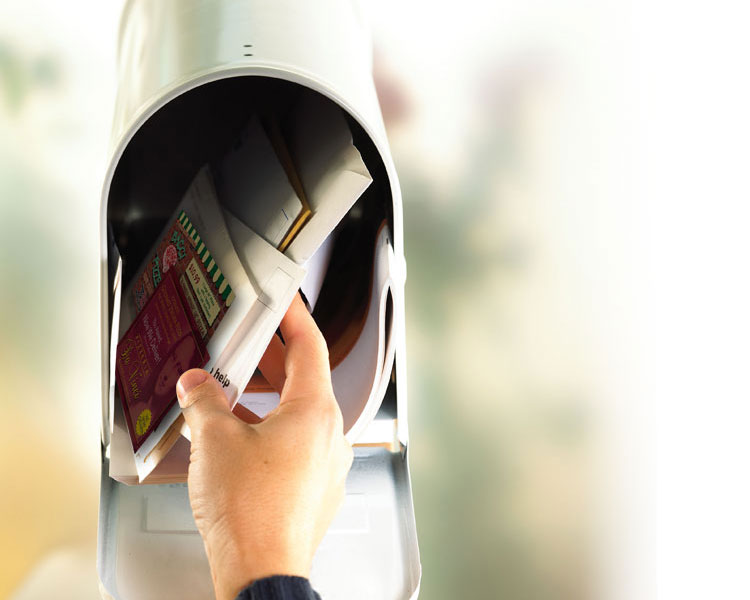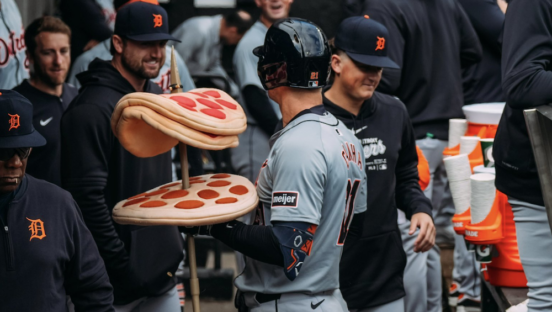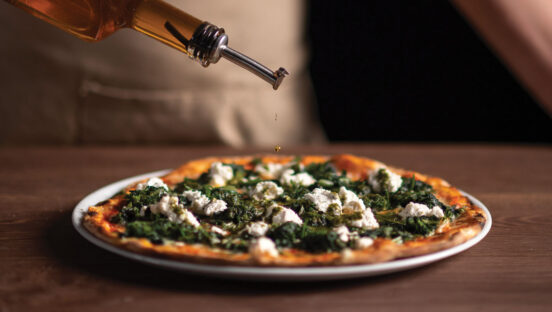With all of the attention heaped upon newfangled marketing techniques, such as mobile marketing, text/email offers and social media, some may overlook what could be the most successful approach of all: the workhorse-like reliability of direct mail, coupons and door hangers. They tend to get an audience’s attention in a different (and, some would argue, a more meaningful) way than other methods, and they can help establish a customer base you might not have otherwise reached.
But these “old-school” approaches are also rife with potential pitfalls. How do you target the correct audience? How do you make your pieces stand out to get customers in the door and keep them coming back? And how do you know your efforts are working? We spoke to various experts to find out how to utilize old-school techniques to obtain new customers.
Assessing the Benefits
Some die-hard fans of smartphone or Web-based marketing may wonder how direct mail, coupons and door hangers still work in today’s fast-paced, high-tech world. But it’s precisely this technology-focused environment that makes old-school marketing pieces so effective, says Jay Siff, CEO of Moving Targets in Perkasie, Pennsylvania. “They work as well as or better than ever, because mailboxes have less stuff in them, so you’re not vying as much for attention,” Siff says. He points to brain studies in which scientists have noted that printed pieces emotionally engage subjects (of any age) differently than technology does. Direct mail also reaches people who don’t use the Internet or mobile devices.
Joy Gendusa, founder and CEO of PostcardMania in Clearwater, Florida, notes that direct mail provides customers with a physical reminder to visit your pizzeria. “With emails or mobile marketing, you might hit delete right on the spot, or you might not be ready to tackle that message at the exact moment it comes through, and then you forget about it,” she explains. “These types of contacts are also intrusive, whereas with mail, people are mentally ready to go through it when they decide to.”
With a population eager to save money—and often bombarded on their mobile devices and computers—direct mail helps differentiate your pizzeria by building trust without imposing upon the customer. “Direct mail and couponing continue to be one of consumers’ favorite ways to save money, and direct mail doesn’t require the consumer to do anything outside of his normal routine since he’s already getting the mail,” says Chris Rimlinger, senior vice president of marketing for Money Mailer in Garden Grove, California.
Additionally, your old-school mailings can serve as a gateway to new-school resources. “A direct mail piece can influence and drive the initial visit to online and mobile marketing—a website, online ordering site, Facebook page, text message specials, loyalty program, etc.,” says Josh Davis, vice president of sales for Mail Shark in Mohnton, Pennsylvania. Operators can “incorporate targeted content onto the hard-copy direct mail pieces for a more integrated marketing approach, such as driving first-time users to your online ordering site with a promotional offer.” For one pizzeria, Davis found that a QR code, with instructions to scan the code to access a “secret coupon,” received 500 unique views over a 10-week period.
In fact, new-school techniques, such as QR codes, are increasingly making their way onto “old-school” marketing pieces. “Savvy business owners are combining print and digital media,” says David Handmaker, CEO of Next Day Flyers, with locations in Los Angeles and Saddle Brook, New Jersey. “Over the past 12 months, we’ve seen a dramatic upswing in the number of companies incorporating QR codes into their layouts for postcard mailers, door hangers and flyers. Individuals appreciate instant gratification, and marketing with QR codes provides a level of engagement that TV, radio and print can’t achieve on their own.”
“Savvy business owners are combining print and digital media. We’ve seen a dramatic upswing in the number of companies incorporating QR codes into their layouts for postcard mailers, door hangers and flyers.”
– David Handmaker, CEO, Next Day Flyers
The Right Moves
Follow these steps to make sure your “old-school” marketing remains relevant and maximizes ROI:
Target—and Tailor to—Your Audience. An every door direct mail (EDDM) campaign helps you saturate an area based on carrier route or purchase lists that fit a certain demographic. “You can directly target your most potentially profitable customers—we recommend staying within a four-mile radius of the restaurant—based on age, income, children in the household, gender, marital status, birthday, new movers and more,” says Jennifer Graham, client services coordinator for Triadex Card Mailers in Tampa, Florida.
Birthday mailers for current customers are also effective. Graham notes that most restaurants have at least 1,000 birthday-celebrating people within four miles of their locations each month—a perfect excuse to mail out a gift card or special offer.
Rimlinger notes that new movers are particularly valuable contacts, so hit them with strong offers—such as half off, a free side dish with an entree, or a “buy one, get one free” deal—to encourage extensive sampling of your menu. Include the menu on your direct mail piece so customers can keep it for future orders.
Lists can help you narrow down an audience, but think carefully about where your customers will come from. “For a pizza restaurant, some operators simply draw a radius around the restaurant and go from there, but, with today’s direct mail options, you can do so much more,” Rimlinger says. “What are your delivery boundaries? Where are your competitors? Are you in an area with a lot of families? By identifying whom you’re trying to reach, you can make sure you get a strong ROI.”
If you’re not familiar with mailing demographics or simply don’t have the time to spare, Rimlinger suggests partnering with a local direct mail expert. Alternatively, Siff recommends partnering with noncompeting local businesses, such as a nearby mechanic, to send offers to each other’s mailing lists.
Hone Your Pitch. To determine your best strategy, Davis says you should first ask yourself, “What do I want to accomplish?” He explains, “If you’ve just revamped your menu with exciting new items and/or new prices, a menu is a logical piece. If it’s football or baseball season, a magnet with the local team’s schedule is a very strong mailer. If you want to do something unique and exciting, try a scratch-off postcard.”
Some experts say the special offer is the most important part of a direct mail piece. “All the recipient cares about is what’s in it for them,” Siff says. “The offer is king.” Just make sure you know—and properly cater to—your various audiences; college students, for example, will respond best to a different offer than a family of four. “You should make a stronger offer to acquire a new customer, which should be worth $1,000 to you over the life of the relationship, so you might give away a free pizza,” he says. “But you don’t need to do the same with current customers. Just make the offer easy to understand—for example, offer a free pizza worth up to $15 rather than a $15 gift certificate—and remember that it’s better to make one strong offer than many weak offers.” And always include a call to action—tell people what to do.
Graham lists the following must-haves for a successful direct mail piece: “Provide an attention-getting offer in real dollars; set the expiration date for a minimum of six to eight weeks after your order is projected to be received by your new customers; include mouthwatering pictures of your most popular menu items; and have a way to track your redemptions.”
Michael D’agostino, co-owner of TakeoutPrinting.com in Newburgh, New York, agrees that keeping it simple and valuable will generate the best response. Avoid offers such as “$1 off” or “20% off,” he says; response rates improve when customers are given something free, such as a dessert or an appetizer with two entrees. “Day of the week” specials, such as Monday or Tuesday deals, generate sales on slow nights. Just put an expiration date or a disclaimer (i.e., “limited-time offer” or “may expire at any time”) on the piece to cover yourself, he says.
Kamron Karington, CEO of Repeat Returns in Las Vegas, recommends offering bundles, such as free breadsticks or a two-liter soft drink with a pizza purchase. The customer will see a $5 to $6 add-on for something that actually costs you much less. Karington also recommends making three offers on every EDDM piece: low (such as a cheap pie), medium (a meal deal) and high (a two-pizza bundle). But avoid pitching everything (lunch, dinner and catering) all at once so your message doesn’t get jumbled.
You might also drive customers to the Web by utilizing reviews of your business on your direct mail or door hangers, Gendusa says. “Put real ratings and reviews on the piece, so people can go online and read more. For independents, that promotes the quality of your pizza. People checking sites like Yelp, Urbanspoon or Google will see what others think of your pizza and what differentiates you.”
Mind Your Design. Use a clear font, hire a professional photographer to shoot appealing food photos and leave enough white space to avoid straining the customer’s eyes with tiny print, D’agostino advises. “Photos are very important because, with direct mail, you have less than three seconds to get someone’s attention. The more appetizing the photos are, the more likely people are to order.”
Karington advises using product shots with people in them to create an emotional connection with customers. “Show a shot of a happy family looking at your pizza,” he says. “That depicts the product in use and connects it to a family having a great time.”
Providing a headline and image that back each other up—including an image of pizza—allows customers to glance at the piece and know exactly what type of business they’re looking at, Gendusa notes. Adds Rimlinger, “The right design can show readers at a glance if your restaurant features a family-friendly atmosphere or focuses more on things like sports or gourmet options.” Davis also recommends using strategically placed coupons while highlighting your best-selling, most unique or most profitable items.
Pick Your Piece. What’s the best type of piece to send out—a letter, menu, postcard, flyer or brochure? It depends on your target audience and goals. Siff says new customers are best captured with a letter, while existing customers can be satisfied with a postcard (which are usually cheaper). Karrington agrees: “A letter connects on a different level; with a ‘Dear Neighbor’ letter, you can get a 10.5% response rate even without offers, whereas postcards are immediately perceived as advertising. A letter done in a nonsales-y way is unique and gets customers in the door the first time. Once you have them as customers, then switch to postcards.”
Price matters to operators, of course, but Davis says price shouldn’t be the only consideration; evaluate all of the different types of pieces, sizes and costs. “The more you print, the lower the print cost. Depending upon the piece and quantity, your cost will be anywhere between 25 cents and 41 cents each for designing, printing and full-service mailing,” he explains. “However, looking only at the price per piece is a trap for many operators; if you don’t have a short-term strategy to deplete any quantity of pieces that you print and mail, it could be detrimental. When your profits are based on commodity-driven food costs and an ever-changing industry, having the flexibility to change your advertising is key.” Hence, Davis recommends printing only what you need to get you through the short term.
Shared mail is another option for operators. As Rimlinger notes, you may lose some control over the size of the piece, the paper used, and the mailing date, but the costs drop when you share the expenses with other advertisers.
Nail the Frequency. Customers like a great deal, but they don’t want to be bombarded with too much information. “If discounting is your model, it might never be too much, but if you’re defined only by your offers, customers might not come unless they have a coupon,” Siff says. “Are you desensitizing customers? Is response dropping off?” He recommends mailing every three to four weeks to keep your pizzeria at “top-of-mind awareness” without overwhelming them.
D’agostino advocates using EDDM and mailing to two or three carrier routes surrounding the pizzeria every four weeks. Consider attacking two routes on the first week of the month, then doing another two on the second week of the month. “Rotate the people getting each mailing, but ensure that at least once per month the customer gets your menu,” he says. “Don’t try just one carrier route, and change something on the piece for each printing—the cover, coloring, specials or pictures—so the customer tosses the old one, not the new one.”
Karington agrees that owners should spread out their contact over a period of time to better ensure they reach customers when they’re ready to order pizza. “People don’t buy when you advertise; they buy when it’s right for them,” he says. “So if you mail to 10,000 people, mail to 2,500 of them every 10 days. Aim for less reach and more repetition.” The easiest tactic, he notes, is saturating an area in concentric circles, but look out for natural barriers (such as highways) that people avoid crossing; it can cause significant dropoffs in response. You’ll also want to target customers who haven’t visited in 30 or 60 days with a postcard reminder.
Track Results. “Results” can mean different things and can be hard to directly quantify. Look at all of your areas of business to get a good handle on what’s working. “Response means nothing; sales mean everything,” D’agostino says. “Pizzeria owners know their weekly averages. Are sales up $2,000 in a weekend? Are you getting new customers on your email list? Did 32 new customers order?”
Some experts quote a typical direct mail response at 1% to 2%, although strong mailings can have up to 40% redemption, Siff says. Ultimately, it comes down to return on investment. “What did it cost you (in food costs, not retail value)? What did it return?” asks Siff. “Who’s coming through the door, and what are they spending?” Also evaluate your original goals—were you looking to pep up a slow month, kick-start a holiday weekend, or attract new lifetime customers who will spend over the long term?
Davis notes that many operators look solely at initial coupon redemption, but that might show only part of the ROI. “Counting coupons is, by itself, an ineffective way of analyzing direct mail ROI, but it’s an effective way of analyzing what people are and aren’t reacting to. And that’s crucial in being able to leverage what’s working and replace what isn’t,” he says. “I recommend looking at multiple factors, including coupon redemptions and sales, analyzing new guest traffic and calculating the lifetime value of that new customer.”
Finally, once you’ve gotten that customer inside the pizzeria, you want to capture the information that will allow you to spend less on future contact. “Direct mail is expensive unless you have a strategy on collecting information, such as email addresses,” Gendusa says. “Put a system in place where employees are trained to get the customers’ information.” Response rates fluctuate depending on how many pizzerias are in the area, she notes, and many factors (such as signage or parking) can sway someone to visit—or stay away.
To learn more about how pizzeria operators are using “old-school” marketing techniques to profitable effect—including three case studies—check out the expanded version of this article at www.pmq.com.Karington agrees that failing to capture customer data leads to an endless cycle of potentially expensive direct mail. “The biggest mistake is to spend, acquire, lose and start over,” he says. “Many operators saturate the area and make more money, but then business trails off, and they repeat the cycle. Putting people in the database to communicate directly with them will raise profits over the long term.”
It's In the Mail
Best Choice Print & Marketing Experts, 800-783-0990, bcms.US
Color Door Hanger, 818-253-5514, colordoorhanger.com
Mail Shark, 888-457-4275, themailshark.com
Melissa Data, 800-635-4772, melissadata.com
Moving Targets, 800-926-2451, movingtargets.com
Next Day Flyers, 800-251-9948, nextdayflyers.com
Our Town America, 800-497-8360, ourtownamerica.com
Pioneer Color, 877-473-3546, pioneercolor.com
PostcardMania, 866-850-0942, postcardmania.com
Repeat Returns, 888-794-6512, repeatreturns.com
Takeout Printing, 877-257-7468, takeoutprinting.com
Taradel, 888-210-8189, taradel.com/pizzamenus
The Menu Express, 877-250-2819, themenuexpress.com
Triadex Card Mailers, 877-874-2339, triadexcardmailers.com















